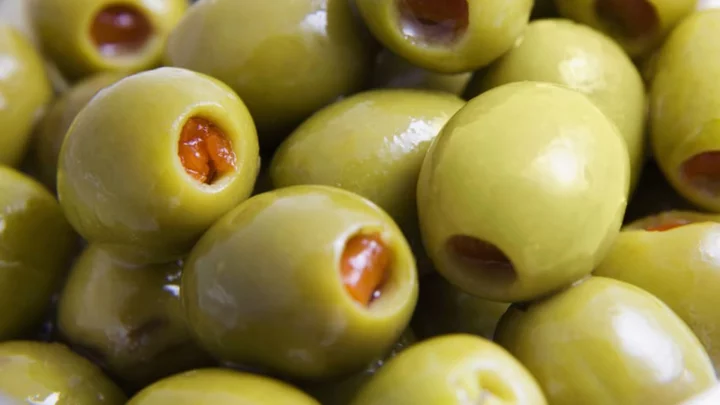Pimentos start out in life as a variety of chili pepper called “cherry peppers.” Small and red (hence the name), they are sweeter than bell peppers and very mild.
Most people use pimento as a garnish, either in the center of a green olive or mixed into cheese. Green olives fresh off the tree are bitter in flavor, so they are traditionally cured in brine before packaging. Even then, their flavor is more palatable when a touch of something else is added, and in the U.S., the most popular “something” is pimento.
Until the early 1960s, pimentos were sliced and then stuffed into olives by hand. The Sadrym company of Seville, Spain, introduced the first automatic olive-stuffing machine in 1962, and is the largest manufacturer of such equipment today. In fact, most pimento-pushing machines are still made in Spain, despite the fact that the favorite olive insert in that country is anchovy.
The most modern machines use a mixture of mashed pimentos combined with mixture containing a binding agent like gelatin or guar gum that is formed into large sheets and then sliced into strips and fed into the stuffer on large rolls. The stuffing machine—which must be very precisely calibrated—first cuts a plug the size of the pit in one end of the olive and pushes the pit out using an X-shaped punch on the opposite end of the fruit. Then the pitted olive moves to the next station, where a strip of pimento is cut and injected into the cavity. Higher-end brands, meanwhile, still hand-stuff the sliced pimentos directly into the olives.
A version of this story originally ran in 2014; it has been updated for 2023.
This article was originally published on www.mentalfloss.com as What Are Pimentos, And How Do They Get Inside Olives?.

